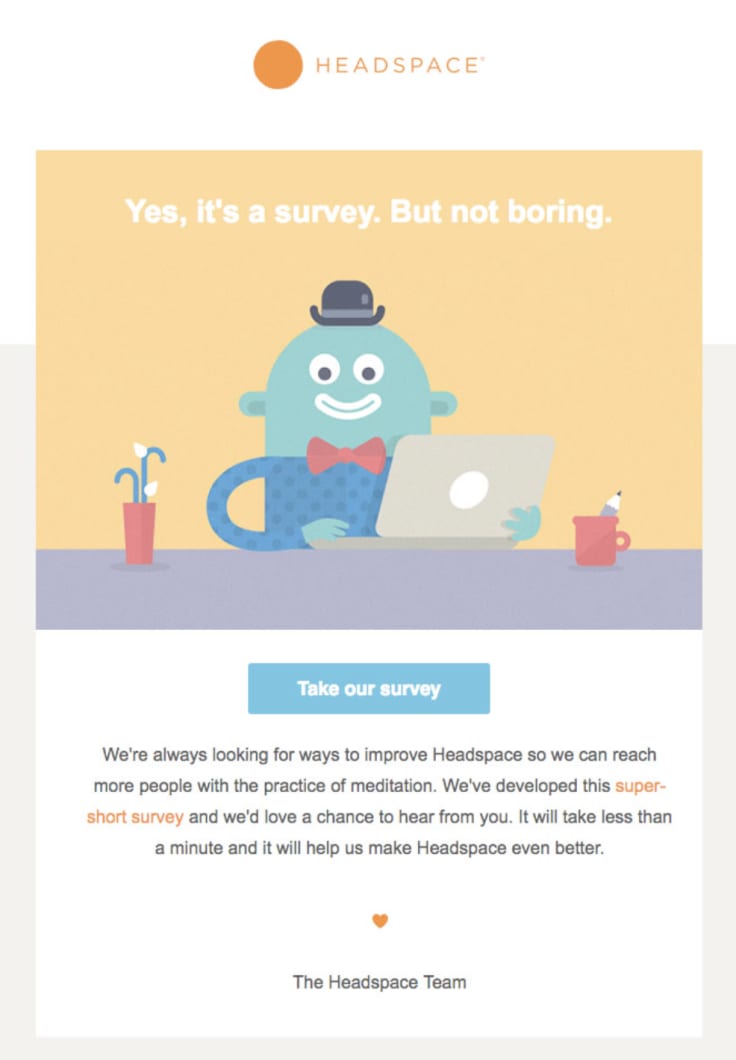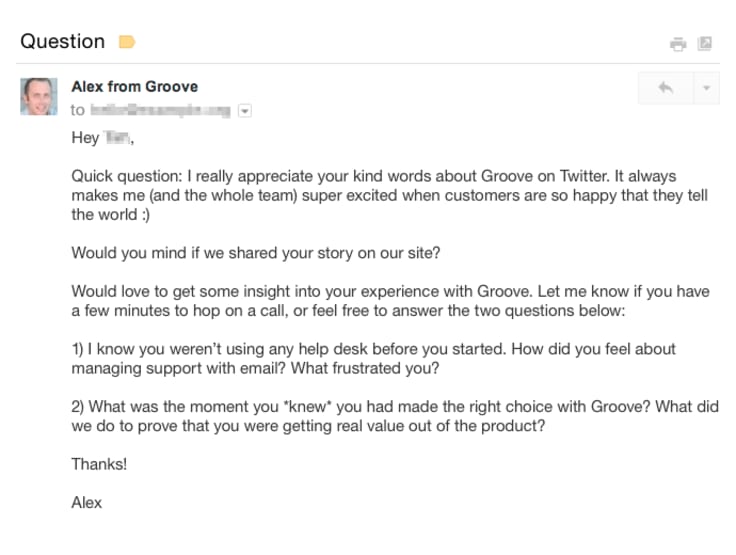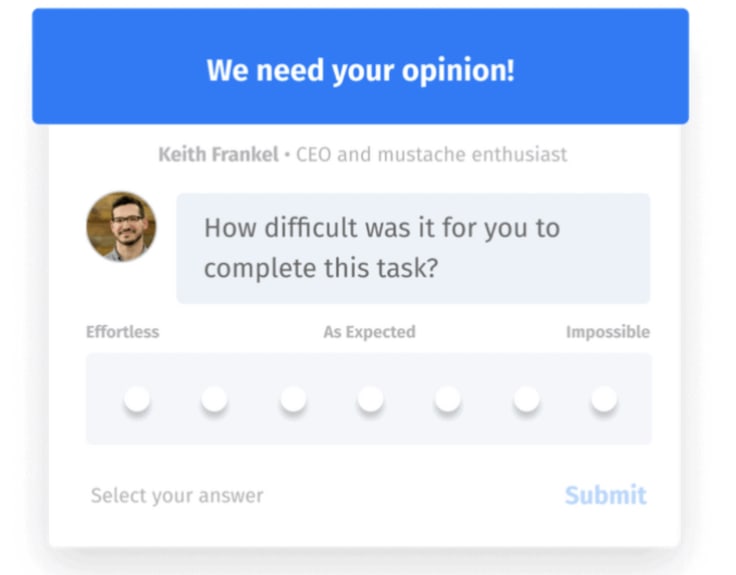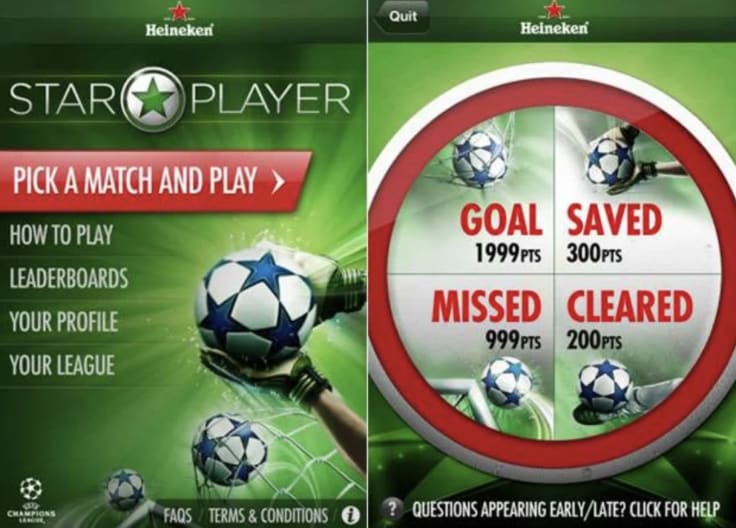Showing top 0 results 0 results found
Showing top 0 results 0 results found

Customer feedback is essentially opinions and experiences shared by the customers about a product or service they have engaged with. It helps customers share their experience with the product or the company and allows businesses to improve product development and overall customer experience.
By gaining insights into how customers feel about the products or their expectations, businesses can design custom strategies to advertise and promote the products or services.
In the digital transformation era, businesses leverage leading technologies to collect customer feedback and evaluate the insights derived for building a solid brand.
With trending technologies like artificial intelligence, companies can provide personalized recommendations to customers based on their buying behavior and purchase history. Further, AI analyzes data and leverages progressive learning algorithms to achieve incredible accuracy.
Automation replaces repetitive manual processes with computerized ones to reduce the risk of errors, thus saving time and resources.
This article will help you understand how trending technologies shape the future of customer surveys.
Top technologies used for effective customer surveys
1. Conversational chatbots
Businesses use AI-powered chatbots to automate customer support and enhance customer experience. According to a survey by Cognizant, the global market for conversational AI chatbots is expected to reach $1.3 billion by 2025.
Chatbots are a popular medium for real-time customer support. However, most businesses fail to recognize their power to collect customer feedback.
Conversational chatbots can conduct personalized surveys and capture customer feedback on relevant questions. They can mimic human conversations and ask questions to customers framed based on the customers’ previous responses.
AI gives chatbots a human touch as its algorithms enable bots to learn through ongoing customer interactions and make the process of feedback capturing flawless. That way, AI-powered chatbots help to craft personalized experiences for the customers.
2. Automated emails
Email surveys are one of the most efficient methods to capture customer feedback. According to Campaign Monitor, 72% of customers prefer receiving email promotional content.
Automated email surveys can skyrocket the survey distribution effort while improving the effectiveness of these campaigns. Automation also ensures that survey emails reach the right customers at the right time.
For example, if the customer hasn’t completed a survey, you can leverage email automation to send them completion reminder emails without any manual intervention.
With the help of email automation, you can also segment customers into different groups based on their demographics, purchase history, and more. It can help you craft personalized emails and design a custom campaign for each group.
Take, for instance, the survey email sent by Headspace, an application that focuses on improving the customer’s well-being. The simple yet catchy illustration at the beginning of the email persuades the reader to continue reading the message and complete the survey

Another example of a good survey email is the one from Groove, a sales engagement platform for Salesforce. Their survey email carries a plain copy, sent on behalf of their CEO.

The email welcomes the customer and then asks them why they are signing up. This is a great way to make the recipient feel that their opinion matters.
You can leverage welcome emails and user onboarding emails to share a quick survey with the customers and understand their points of view.
Don’t forget to leverage these tools to improve your email campaign effectiveness:
- MailChimp - To design and send automated emails to the customers without hassles.
- Canva - To design attractive illustrations and icons for the email messages. Read this step-by-step guide to understand how to create designs from scratch in Canva.
- WiseStamp - To create a unique email signature for the emails. Learn how to create a Gmail signature.
- Grammarly - To write grammatically correct and engaging messages for the customers.
3. Real-time market research
Real-time market research is another unique method of collecting information on customers’ buying habits. By leveraging the power of AI and automation, real-time market research gives thorough insights into the customers' behavior, interests, demographics, and more. These insights can help brands make accurate decisions and craft a strategy that better addresses the customers' needs.
For example, Uplevel, an engineering team effectiveness platform, uses customer surveys to capture feedback from the users in real-time. Their consistent forms procure actionable customer feedback when users use their platform. Capturing feedback in real-time also allows you to reduce the first-response time.

4. Sentiment analysis
Sentiment analysis offers businesses an effective way to gauge how customers feel about the products or services. It leverages machine learning and natural language processing (NLP) to understand and analyze customers' responses. The feedback is sorted into positive, negative, or neutral categories.
By understanding how customers perceive the brand, businesses can redesign their processes to make strategic decisions. Sentiment analysis provides businesses with an edge to survive in a competitive market.
Data shows that only 4% of unhappy customers take the time to complain directly to a company. The remaining 96% either switch to a new company or remain dissatisfied with your brand. That’s why businesses need to identify the typical customer complaints and take relevant actions.
A sentiment analysis software identifies the sentiment behind every message and shares the results in charts and graphs on a comprehensive dashboard.
For example, Expedia conducted a sentiment analysis to understand travelers’ intent to travel in 2021. The intelligent sentiment classifier provided a detailed classification of each sentiment for factors, such as destinations, hotels, transportation, and more. This information was used to devise strategies to promote travel and tourism in the post-pandemic world.
5. NLP-enabled voice assistants
Voice assistants are used for calling friends, searching for a cafe, checking the weather, and more. A forecast by Statista revealed that the number of digital voice-assisted devices will reach 8.4 billion units by 2024.
Did you know that voice assistants can help in gathering information through surveys?
NLP-enabled voice assistants like Siri or Alexa are used for capturing customer feedback. As they’re powered by natural language processing technology, voice-assisted surveys can understand human responses. They also allow brands to follow up with the customers with relevant questions while replacing paper and digital forms.
With the help of NLP and conditional logic, businesses can design short surveys to capture customer feedback efficiently. This also helps in reducing the non-response and survey abandonment rate.
For example, Johnnie Walker, the Scotch whiskey brand, collaborated with Amazon Alexa to build a voice assistant that asks customers a list of questions while recommending the best whiskey according to their responses.
Additionally, customers can learn about the whiskey's history, label facts, and other details. The smart voice assistant has several built-in voice-assisted checks to ensure that customers are over the legal age for drinking.
Also, the company is using voice assistants to collect customer feedback. It helps them understand the likes and dislikes of customers while motivating them to make relevant improvements in their processes.

This new approach toward gathering feedback enhances the customer experience by making the customer feel valued and giving businesses a gist of customer sentiments.
6. Gamification
Enhancing customer surveys with gamification technologies is another effective way to boost the survey experience and engage customers. It can increase the probability of survey completion and online conversion rate. According to Zippia, companies that leverage gamification experience up to 7X higher conversion rates versus those that don’t.
Incentivizing surveys can help improve response rates. Here are some ways to hook the customers, present rewards, and boost engagement.
- Badges
Badges can be given to the respondents toward the end of the survey to showcase their achievements. For example, customers can be awarded some points for every question answered. Once they have responded to all the questions from the survey, these points can be encashed for rewards.
- Monetary incentives
Small monetary rewards are the most effective survey incentives brands can leverage. For example, you can add cash rewards to the respondents' online wallets when they complete the surveys.
- Social recognition
Social recognition is another effective, rewarding system. Giving a shout-out on social media can make the respondents feel valued and encourage others to participate in the survey.
- Free goodies
Offering respondents free product samples, free trials, or free merchandise is a great way to influence them into participating in the surveys.
- Discount vouchers
Sharing discount coupons can be delivered to the respondents once they complete the survey. This can also encourage them to shop for your products.
Heineken, the beer producer, is known for creating engaging customer experiences for customers. When they were sponsoring the game Champions League, they launched a campaign named Star Player to encourage customers to participate.
The players were asked simple questions while the game was in progress. Based on the responses, scores were assigned to the players. An intuitive leaderboard was designed to showcase all the points.

7. Social sampling
With a user base of 4.65 billion, social media is one of the most effective mediums for targeting the desired audience for surveys.
Social sampling employs sentiment analysis and word contextualization to derive quantitative data and draw precise conclusions for customer research. It presents businesses with opportunities for targeting niche audiences and capturing their interests, buying preferences, and other feedback. By observing the behavior of individual customers, businesses can gain rich insights into understanding the customers and market.
For example, MyGlamm, a beauty brand, launched an exclusive survey to understand the customers' interests. The survey was conducted to determine the type and quality of lipsticks preferred by consumers.
Check out this screenshot of the MyGlamm Lipstick Survey.
Whether it is the type of lipstick, the brand, or other information, the MyGlamm team gathered the correct data for planning their future launches. Also, all the participants were gifted free lipstick to boost the response rates.
This survey helped the brand reach out to new prospects, even those who had never heard about MyGlamm. This was an excellent social sampling experiment as it revealed the customers' best interests.
5 Tools for gathering customer feedback
- SurveySparrow
SurveySparrow is an omnichannel experience management platform that helps businesses create engaging surveys. These surveys can be customized to showcase relevant questions to the customers. The tool also offers personalization and gamification features to customize the experience for every respondent.
2. Qualaroo
Qualaroo is a customer and user feedback software that helps businesses survey customers and visitors on the website or within their product. With Qualaroo, you can design various types of surveys using question branching logic. Further, you can leverage sentiment analysis to better understand the respondent's emotions.
3. Typeform
Typeform provides businesses with an intuitive survey maker for creating customer surveys. Like Qualaroo, Typeform also helps you create excellent surveys with question branching functionality. This enables you to tailor the questions according to the respondent's responses.
You can also connect Typeform to Google Sheets to convert captured data into intuitive reports and gain exclusive insights into customer feedback and behavior.
Typeform has a library of survey templates that you can directly import while creating the surveys.
4. Forms.io
One more application widely used by businesses for creating surveys is Forms.io. It offers a simple yet intuitive survey builder application employing drag-and-drop functionality. You can customize the colors and fonts used in the surveys to match your branding. Forms.io also has a built-in reporting tool that helps you analyze the customers' responses.
5. MonkeyLearn
MonkeyLearn is a sentiment analysis tool that accurately analyzes the customers' responses to the surveys. You can easily integrate it with other tools via direct or API integration. Further, you can train MonkeyLearn’s intelligent analysis system to understand the business data, recognize the language, and provide a detailed sentiment analysis report.
Conclusion
Customer surveys are an excellent way to collect feedback on the products and services. By combining the power of technology and surveys, businesses can gain exceptional insights into customer behavior.
Technology adds a whole new dimension to the customer experience and ultimately contributes to the business's success. Use the information you learned in this article to leverage leading technologies to improve customer surveys and deliver an outstanding customer experience.



